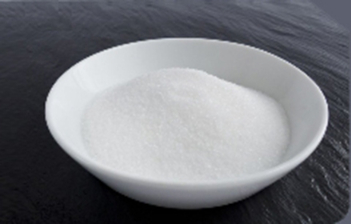Have you ever thought about what magical things are hidden behind the deliciousness? When we taste various foods, few people pay attention to those elements that have richer taste and excellent quality. Today I will take you to explore the magic of the food industry, a chemical miracle that has been widely used but little -known -Sodium Tripolyphosphate.
First of all, let’s talk about the pain points of the food industry, the key to the perfect situation for food.
In the process of pursuing food taste, appearance, and shelf life, manufacturers have been constantly exploring innovation. Sodium tripolyphosphate just solves this pain point in the food additive industry.
In this article, we will comprehensively analyze the mysteries of Sodium Tripolyphosphate. We will understand how it is the application of food in food production, its chemical structure, and how it becomes magic powder in the kitchen. From the laboratory to the dining table, we will reveal the unique advantages of Sodium Tripolyphosphate in modern food innovation.
If you are curious about the tech miracles behind food, if you want to know how to know how to become the leader of taste innovation, then this article will be a guide that you should not miss. Open the infinite possibilities of STPP in the food world.
Introduction: Reveal the magical things of the food industry
Between our breath, the food industry is making a contest full of innovation and chemical art. Behind each delicious, there may be a magical thing. Today we will focus on one of them -Sodium Tripolyphosphat. In the food industry, it has played a huge role and controls our taste buds. Let’s unveil the mystery of Sodium Tripolyphosphate.
Sodium tripolyphosphate basic knowledge: unlock the secret of the molecule
First, let’s briefly understand the basic knowledge of Sodium Tripolyphosphate. This seemingly ordinary chemical substance has a complex molecular structure. It is formed by the special treatment of phosphate and has a strong response.
Comprehensively analyze the application field: from the face to the dairy product
Now, let’s understand the comprehensive application of STPP in food production. Whether it is noodles, dairy products, or meat products, Sodium Tripolyphosphate has become an indispensable additive with its unique characteristics. Its extensive application areas make our food more delicious while maintaining a longer freshness and taste.
Wonderful effect: multiple effects of STPP
Sodium tripolyphosphat’s wonderful effect on food is amazing. It can make foods thicker, can also emulsify ingredients, and improve the quality and color of food. It’s fresh -keeping effect also extends the shelf life of food.
Understand the manufacturing process: the birth of sodium tripolyphosphate
In the production process of food sodium tripolyphosphate, countries around the world usually use two production processes. One is the neutralization of heat phosphoric acid with hot alkali called heat phosphate; the other is wet phosphoric acid is neutralized, called wet craftsmanship.
In-depth user practice: Application in Food Innovation
Finally, we will explore the application of STPP in food innovation through the perspective of user practice. Through short user cases, we will show Sodium Tripolyphosphate successfully in actual production to provide you with a more realistic understanding.
Conclusion: Sodium tripolyphosphate irreplaceability
To sum up the full text, we will once again emphasize the irreplaceability of STPP in the food industry. Whether it is thickening, emulsification, or preservation, it brings unlimited possibilities for our food for its unique multiple effects.
1. Soft mouth of the face
Food -grade Sodium Tripolyphosphate plays an irreplaceable role in the production of the face, especially in the production of noodles such as bread, and buns. It is thickened and water-preserved, making the face more easily fermented and softer. This not only enhances the texture of the face but also extends its fresh-keeping period, bringing consumers a more delicious food experience.
2. The smooth taste of dairy products
In dairy manufacturing, food-grade STPPis often used as an emulsifier, making dairy products smoother and more delicate. For example, in the process of making ice cream, Sodium Tripolyphosphate helps to uniformly disperse fat particles, prevent crystallization, and make ice cream more delicate and smoother entrance. The use of this additive improves the quality of dairy products and meets consumers’ high requirements for taste.
3. Improvement of the taste and texture of meat products
Sodium tripolyphosphate or sodium Pyrophosphate is added to meat products to increase the water holding of meat and prevent fatty acids. Because the meat has the lowest pH5.5 (the electric point close to the protein of the meat), when the pH shifts to acidic or alkaline, the water holding is improved.
The polyphosphoric acid saline solution is alkaline, and it has a buffering effect. It adds the pH value of the meat to increase the pH value, so it increases water holdings. In addition, polyphosphates can chelate with metal ions, so calcium, magnesium, iron, and polyphothexate chelated with muscle protein combined with muscle proteins, which relaxes the protein and absorbs more water.
These three examples highlight the application of food -grade Sodium Tripolyphosphat in different foods.
The secret weapon of food innovation: reveal the magic effect of Sodium Tripolyphosphate in the food industry
1. What is Sodium Tripolyphosphate?
Answer: Sodium Tripolyphosphate is a kind of inorganic salt, that is often used as a food additive, which has a variety of functions such as thickening, emulsification, and freshness.
2. Why do I need to use sodium tripolyphosphat in food?
Answer: STPP is widely used in food production because it can improve the taste and texture of food and extend the shelf life of food.
3. Does Sodium Tripolyphosphate are harmful to health?
Answer: Food -grade Sodium Tripolyphosphate is usually considered safe under reasonable use. However, excessive intake may lead to some health problems, and it is recommended to follow the recommended amount of food additives.
4. What foods it is common?
Answer: STPP is commonly used in foods, dairy products, meat products, jelly, and other foods to improve taste and texture.
5. Is there a substitute for Sodium Tripolyphosphat?
Answer: In some cases, other food additives such as phosphate, gelatin, etc. may be used as alternatives to Sodium Tripolyphosphate, depending on the needs of the food.
6. How to use Sodium Tripolyphosphate correctly?
Answer: When using Sodium Tripolyphosphate, you should follow the recommended dosage of the manufacturer. Excessive use may affect the quality and taste of food.
7. Is STPP suitable for vegetarians?
Answer: Most food-grade Sodium Tripolyphosphate is synthetic and does not directly involve animal products, so it is usually suitable for vegetarians.
8. How to identify whether a food contains sodium tripolyphosphat?
Answer: Find “Sodium Tripolyphosphate” or code-named E339 on the food composition table, which is a common logo on food labels.
9. What is the production process of STPP?
Answer: Sodium tripolyphosphate’s production usually forms solid crystals through the reaction of phosphate and alkaline substances, and then refined and processed.
10. Does the food grade Sodium Tripolyphosphate cause an allergic reaction?
Answer: Food-grade Sodium Tripolyphosphate is generally not considered a common allergen, but individual differences exist. If there are symptoms of allergies, consult a doctor.
10 project symbol lists related to food grade phosphate
1. Pay attention to the label when buying:
When choosing a product containing food-grade phosphate, read the food label carefully to ensure that it meets your needs.
2. Understand the recommended amount:
Pay attention to the recommended amount of each product to avoid excessive intake to ensure the quality and taste of food.
3. Reasonable matching ingredients:
During cooking, the ingredients are rationally selected according to the nature of phosphate to enhance the taste of food.
4. Avoid too much heating:
Food-grade phosphate may lose some functions at high temperatures to avoid excessive heating to retain its superiority.
5. Pay attention to the storage conditions:
According to the suggestions on the product label, the food is properly stored to ensure that phosphate is not subject to moisture or too much moisture.
6. Pay attention to allergies:
If you have allergies, you must check the product label to confirm whether it contains the ingredients that may cause allergies.
7. Try different uses:
Exploring the diverse use of phosphates can try to be used in different foods and find their unique effect.
8. Match with other seasonings:
With other seasonings, use the synergistic effect of phosphate phosphate in improving the taste and enhancing the layered sense of food.
9. Use cautiously in baby food:
For baby food, it is best to use phosphate with caution, and it is best to use it under the advice of pediatricians.
10. Maintain diversified intake:
Although phosphate has its own effect on food, it should also maintain a diverse diet to ensure full intake of various nutrients.
STPP Detailed description:
Scope of use:
Sodium Tripolyphosphate is widely used in the food industry, medicine, detergent, water treatment, building materials, and other fields. It is often used as an additive in the food industry, which has the functions of thickening, emulsification, and pine.
Exterior:
Sodium tripolyphosphat is a white crystal or crystalline powder, which usually has good liquidity.
Specification:
STPP produced by different manufacturers may have different specifications, which are generally marked with indicators such as chemical purity, particle size, and solubility.
content:
The content is usually expressed in percentage, indicating the purity of the STPP in the product. For example, food-grade Sodium Tripolyphosphate usually has a high content.
Execution standard:
Sodium tripolyphosphate production and quality usually require specific national or industry standards, such as Chinese standard GB/T 2091-2008.
Solubility:
Sodium tripolyphosphate has good solubility in the water, which can form a transparent or turbid solution. The specific solubility depends on temperature and concentration.
grade:
According to different uses and purity, Sodium Tripolyphosphate can be divided into different levels such as industrial and food grades. Food grade usually requires higher purity and security.
pH value:
STPP solution is usually weakly alkaline. The pH value is generally between 8-10 and can be adjusted according to specific needs.
model:
Sodium tripolyphosphate products usually have different models, which may depend on parameters such as particle size and particle shape.
Other special models or uses:
For special industries or applications, some manufacturers may provide Sodium Tripolyphosphate, such as special models, or uses, such as dirt-resistant agents in water treatment.

